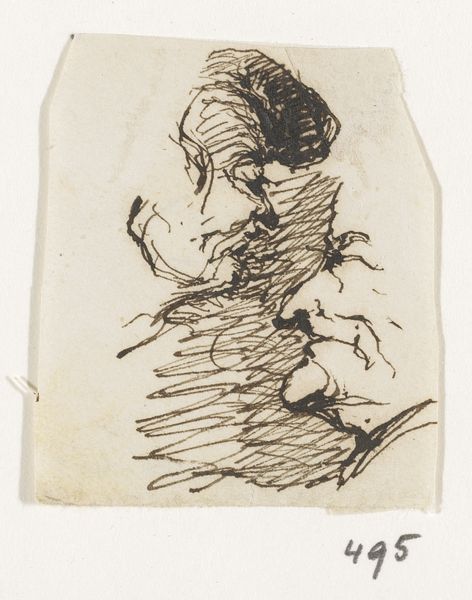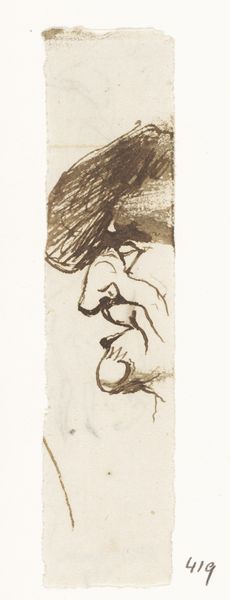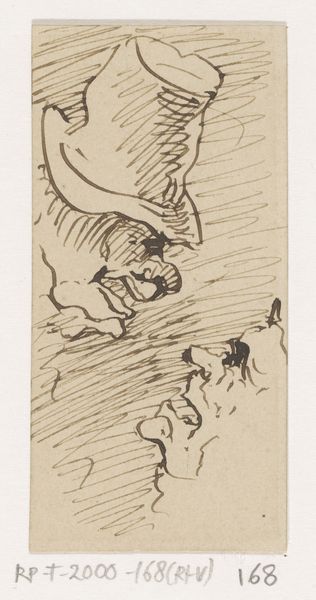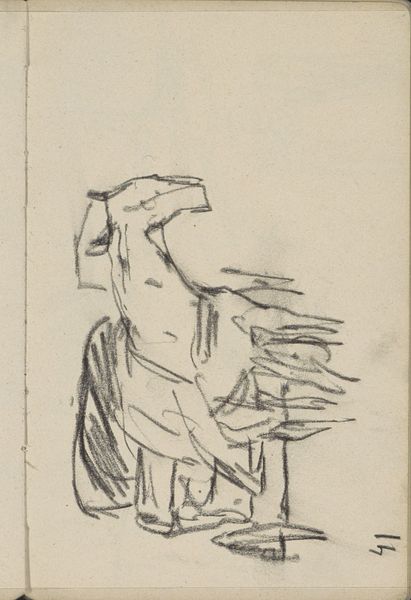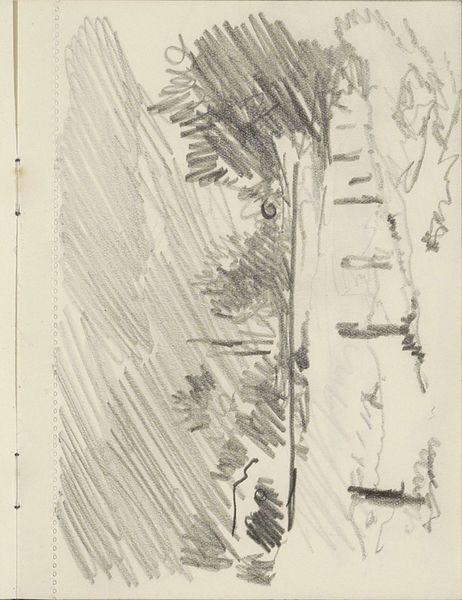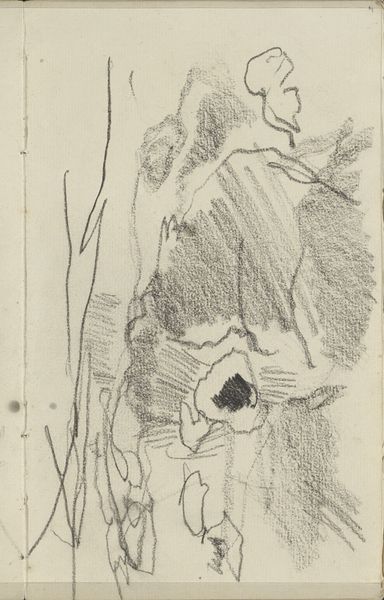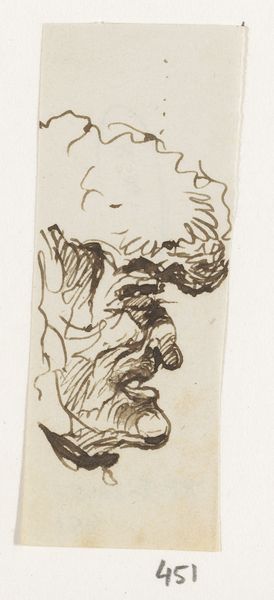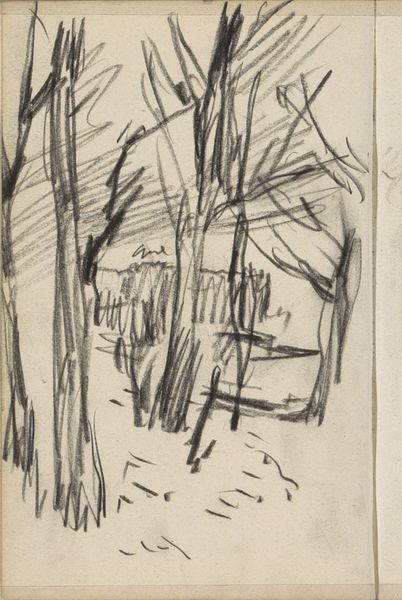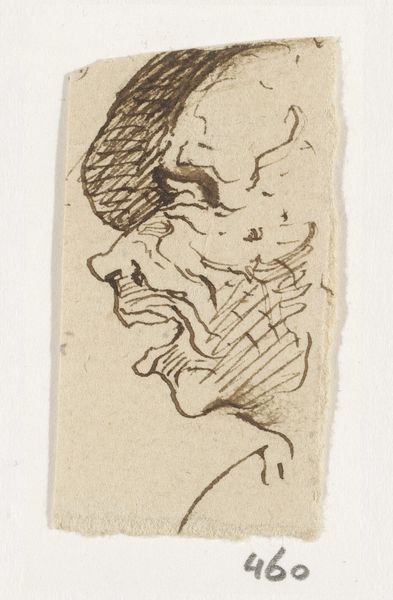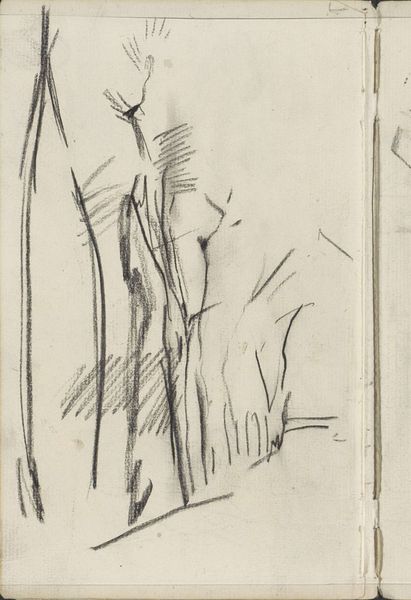
Dimensions: height 76 mm, width 26 mm
Copyright: Rijks Museum: Open Domain
Editor: Here we have "Kop," a drawing made with ink by Johannes Tavenraat, dating sometime between 1840 and 1880. The use of lines gives it an interesting texture and kind of a serious mood, almost stark. How would you interpret this work? Curator: For me, it's interesting to think about this work in terms of the readily available, relatively inexpensive materials, like ink and paper, that allowed for the proliferation of portraiture among a growing middle class during the 19th century. This challenges the notion of portraiture as solely a pursuit of the wealthy elite. Editor: That's a fascinating point. So, you are saying the materials democratized the art form itself? Curator: Precisely. Ink and paper enabled artists to quickly capture likenesses, making art accessible to a broader range of people. Consider also the labor involved; perhaps Tavenraat produced many such sketches. It reframes the traditional understanding of art production, doesn’t it? What do you think about the choice of the color? Editor: Well, it's very basic. Maybe it was cost-driven or intentional artistic expression focused on lines and shapes rather than colors. Curator: Precisely. It invites reflection on the artistic process as an accessible craft. It's less about idealized beauty and more about raw, immediate representation using readily available means. The means by which the piece was created is so integral to our viewing of it. What have you gleaned from it? Editor: I like how it pushes us to see art as connected to the means of making. I usually focus on beauty or meaning. Curator: It's a perspective shift that helps us understand the role of labor and accessibility in art history.
Comments
No comments
Be the first to comment and join the conversation on the ultimate creative platform.
